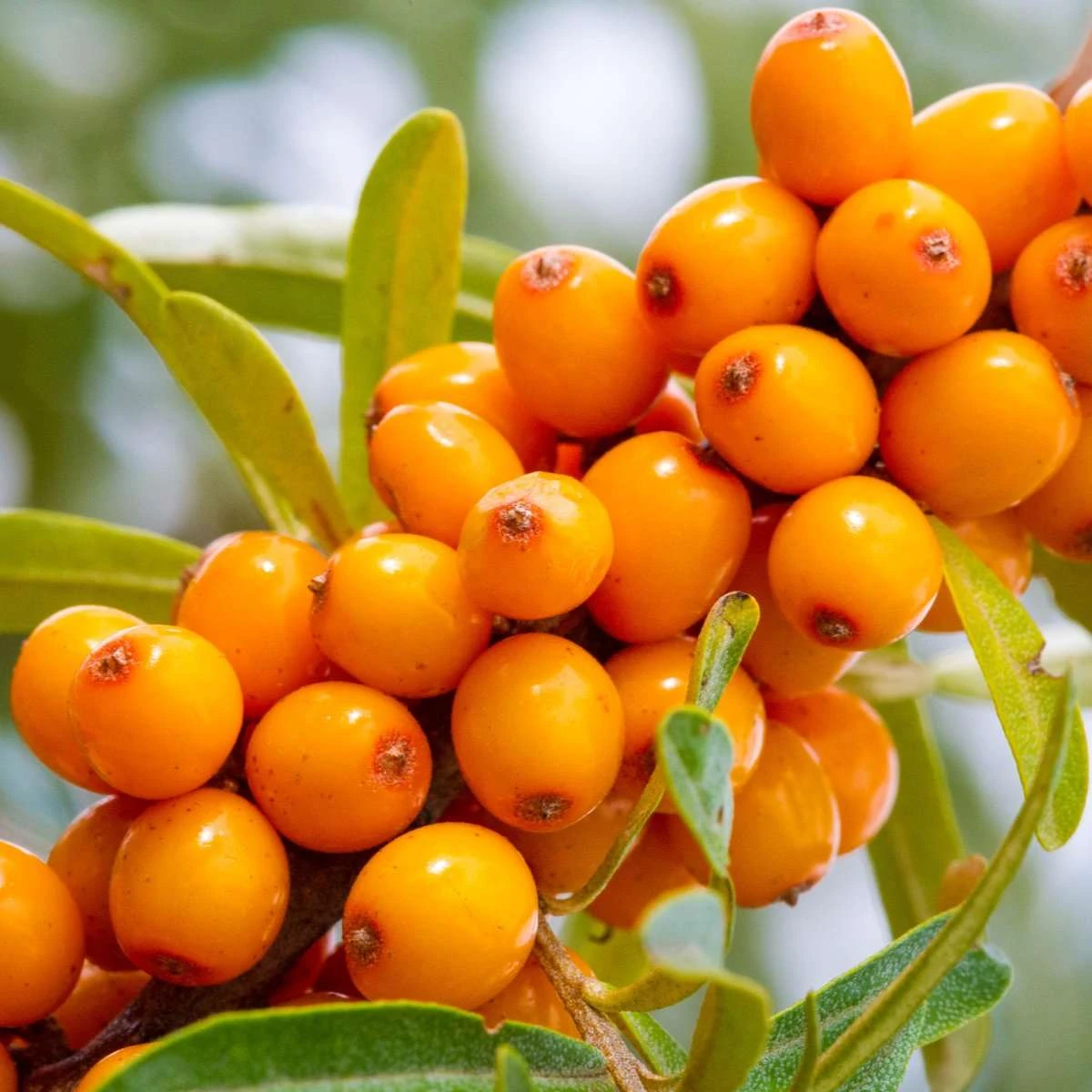Discover the Russian superfruit redefining backyard harvests in cold climates

The Northern Gardener’s Dilemma
For those living in USDA zones 3-8, the dream of homegrown citrus has always been just that – a dream. Most gardeners resign themselves to bland supermarket oranges or expensive specialty imports. Others waste years attempting to grow dwarf citrus in containers, only to harvest disappointing, pithy fruits after endless winter babysitting.
What few realize is that Russian botanists solved this problem decades ago with Hippophae rhamnoides ‘Titan’ – a cold-hardy shrub producing tangerine-flavored berries that thrive where citrus fears to tread. This isn’t just another novelty plant; it’s a legitimate alternative that outperforms citrus in nutritional density while requiring a fraction of the care.
Key Takeaways:
- First seaberry variety truly palatable when eaten raw
- Thrives in -40°F winters (Zone 3) without protection
- 30% more vitamin C than oranges by weight
- Single male plant can pollinate 6-8 Titan™ females
The Science Behind the Superfruit
Physical Structure
The Titan™ differs from wild seaberries through selective breeding that achieved:
- 25% larger berry size (pea-sized vs pinhead)
- Thinner skin with reduced tannins
- Consistent oval shape (wild types vary widely)
- Modified thorn structure for easier harvesting
Nutritional Profile
Compared to standard oranges (per 100g):
- Vitamin C: 695mg vs 53mg
- Vitamin E: 18mg vs 0.2mg
- Omega-7s: 180mg vs 0mg
- Beta-carotene: 3.5mg vs 0.1mg
Growth Mechanism
Unique adaptations enable its hardiness:
- Nitrogen-fixing root nodules
- Waxy leaf coating prevents frost damage
- Deep taproot accesses subsoil moisture
- Wind pollination eliminates bee dependence
How Titan™ Stacks Up Against Other Cold-Climate Fruits
| Feature | Titan™ Seaberry | Dwarf Citrus | Hardy Kiwi | Juneberry |
|---|---|---|---|---|
| Years to Fruit | 2-3 | 5-7 | 3-5 | 2-4 |
| Winter Survival (°F) | -40 | 20 (with protection) | -25 | -30 |
| Annual Yield (lbs) | 18-25 | 3-5 | 10-15 | 8-12 |
| Vitamin C Content | Extremely High | High | Moderate | Low |
Data based on University of Minnesota Extension trials (2022) and USDA plant databases
From Frustration to Abundance: A Gardener’s Transformation
Initial State
Sarah, a Vermont homesteader, grew tired of watching her potted Meyer lemon drop leaves each winter despite grow lights and humidifiers. The $80/year investment yielded maybe 5 usable fruits – hardly worth the effort.
The Breaking Point
After losing her third citrus tree to a -15°F snap, she discovered most “cold-hardy” fruits either lacked flavor (Juneberries) or required elaborate trellising (kiwis). The vitamin C supplements from the store left her unconvinced.
The Titan™ Difference
Planted in a sunny swale with a pollinator male, her Titan™ bushes survived a record cold winter unscathed. By year three, she was harvesting enough berries for fresh eating, juice, and even experimenting with seaberry-infused cocktails.
“I was skeptical anything could replace citrus, but Titan™ berries straight from the bush taste like someone crossed a tangerine with a pineapple. My kids eat them like candy, and I haven’t bought vitamin C supplements in two years.”
– Sarah K., Zone 4b Vermont
Growing Your Own Vitamin C Factory
Planting Basics
- Spacing: 6-8′ between plants
- Soil: Tolerates poor soils but prefers well-drained
- Pollination: 1 male per 6-8 females within 50′
- Sun: Minimum 6 hours direct light
Harvest Pro Tips
- Wait until berries easily detach (August-October)
- Use pruning shears to avoid thorn injuries
- Freeze before juicing for easier processing
- Wear dark clothing – juice stains permanently
Preservation Methods
- Juice: Strain through muslin, lasts 1 year frozen
- Jam: High pectin content sets easily
- Dried: Dehydrate at 135°F for 12 hours
- Fermented: Makes complex flavored shrubs
Ready to Grow Your Own Superfruit?
Titan™ Seaberry plants ship bare-root from our certified nursery during optimal planting seasons.
*Price includes lifetime growing support from our horticulture team
Why Titan™ is Revolutionizing Cold Climate Gardening
For gardeners in USDA zones 3-8 seeking low-maintenance fruit plants with exceptional nutritional value, the Titan™ Seaberry represents a paradigm shift. Unlike fussy dwarf citrus trees or bland hardy kiwi varieties, this Russian superfruit delivers authentic citrus-like flavor without the winter worries.
The high vitamin C content (12x oranges) makes it ideal for immune support, while the unique omega-7 fatty acids offer skincare benefits rarely found in fruits. As a nitrogen-fixing plant, it actually improves soil quality over time – a boon for permaculture designs and organic gardens.
Whether you’re establishing a food forest, creating an edible hedge, or simply want homegrown vitamin supplements, Titan™ outperforms other cold hardy fruit bushes in yield, flavor, and adaptability. It’s not just another berry – it’s a legitimate citrus alternative that thrives where traditional options fail.
